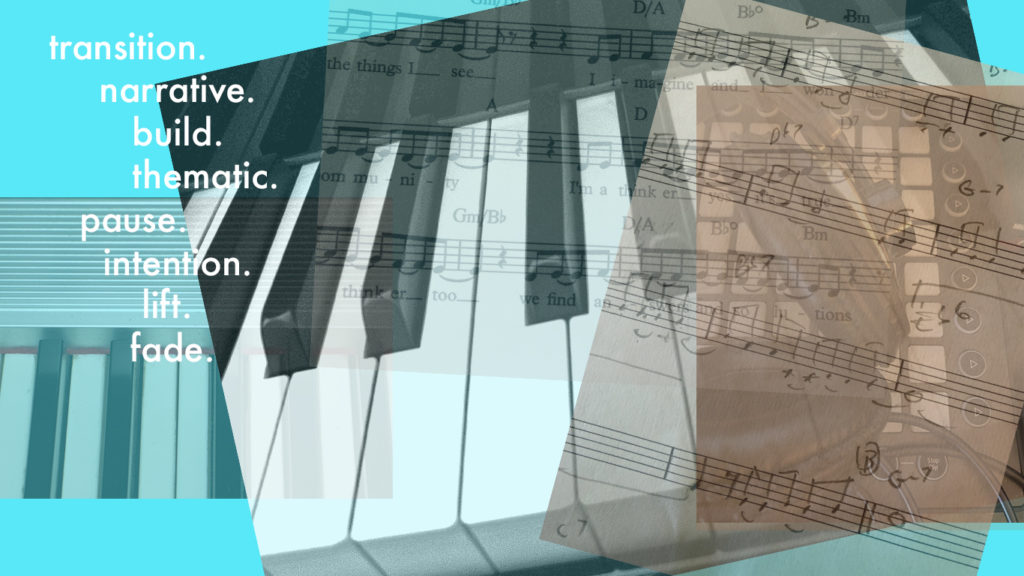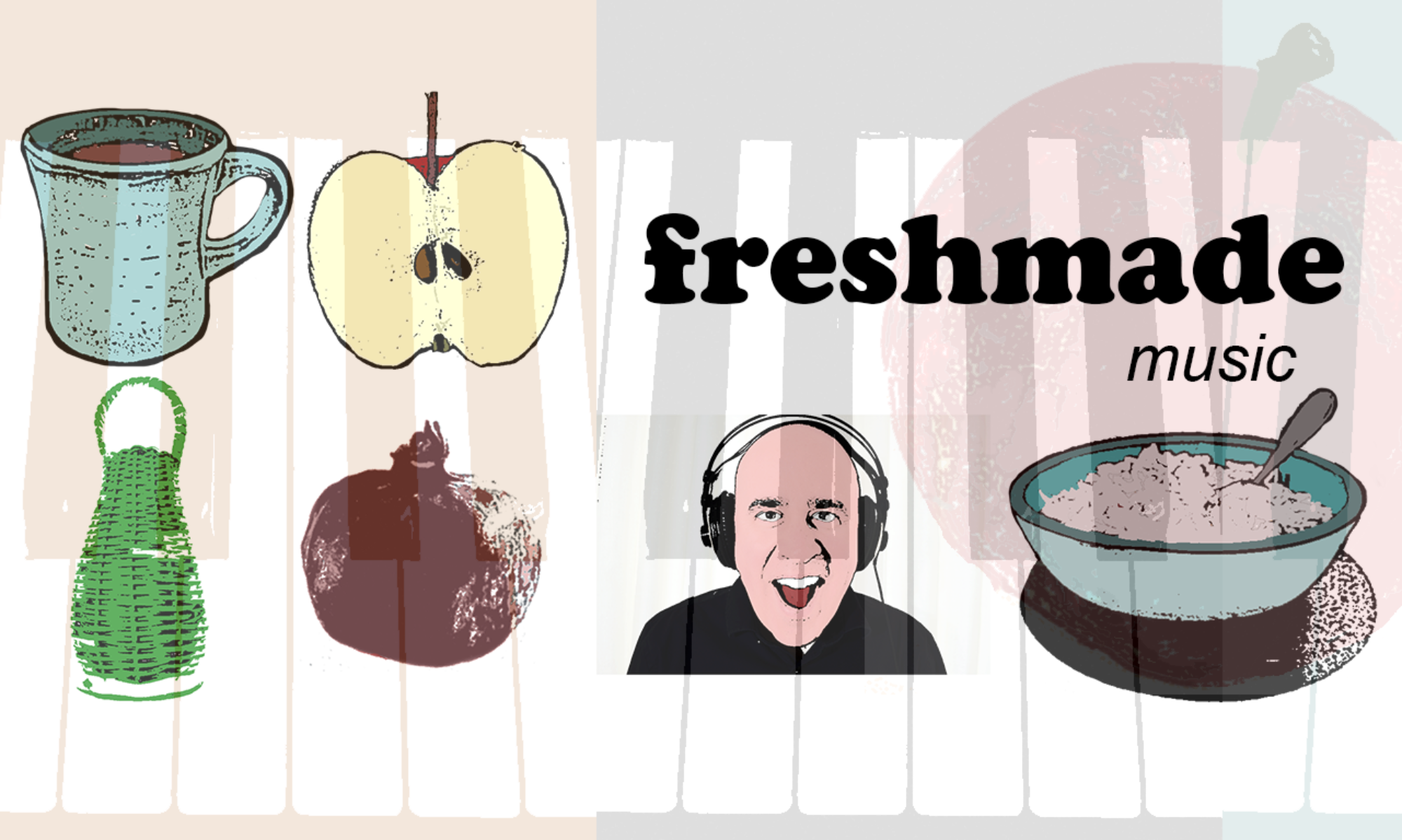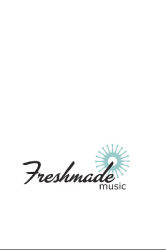
Pairing music with video is a really exciting process, whether you’re working in animation, advertising, film, television or video games. This step in production usually means that you’re nearing the completion of your project. Perhaps congratulations are in order? Finding the right music for your project is a little tricky, but if you keep a few things in mind and you add a dose of patience, hopefully you’ll get the results you’re looking for.
As a composer and music producer, I interface with a wide variety of folks from a variety of backgrounds who make up my client base. They often have exponentially more experience than I do in art, design, writing and business. They may be a super-talented art director, editor, visionary writer, producer or other type of content creator. No matter what their title is, the job of finding music often falls into the lap of the most creative member or members on the team. In almost every case, everyone on the team has a strong passion for music, and they know from the start exactly what they think will work. Sometimes the hardest part for the team is trying to communicate the musical vision to the person who will be bringing it into fruition. That’s where I come in.
In this article, I am addressing the process of working with a composer to create custom music. I recognize that working with a music library is also a viable option for many creatives – that is a somewhat different process.
From the beginning of the project, it’s my job to open a clear line of communication about what exactly we all want for the music, to determine who the final decision makers are, and to figure out a way to keep things on track.
In the beginning, it’s often helpful to get very granular details by sharing existing examples and quick, messy custom prototypes to really hone in on the right direction. Many projects move fast, and sometimes projects change in the middle, so getting that communication going is important for any tweaks or adjustments that we decide on to get the music working well, as fast as possible.
Once in awhile during the review process, I’ll get feedback such as “It’s not working” or “I don’t like it.” That’s clearly not enough feedback. If that’s all I get, I have to do my best to draw my client out more. I don’t need them to tell me their hopes, fears and dreams, but I do need to figure out what music is going to work, so I don’t throw out the good parts and then I need to figure out what isn’t working with the music, so I can fix it.
Very often my job is to translate emotional terms, narrative structure and thematic elements into music.
Here are 5 recommendations for communicating with a composer:
- Use descriptive language. It’s helpful to use emotional words, and try to tie them in to thematic elements in your project. It’s great to use the language that originally inspired you in the creation of your masterpiece. These ideas can be foundational for the music as well. For instance, if you need the music to build right after the sunrise, or if you need the music to pause when the main character looks away because she’s remembering how much she misses her first pet Sparkles… those are the elements to concentrate on and to communicate about. Sometimes you need the music to track a character’s mood, or you need the music to play against what’s happening on the screen.
- Be careful of using musical terms. Musical terms generally have very precise meanings, and if not used correctly, they can be confusing to your composer and muddy up your intention and in turn, your music track. I’ve been in situations where a creative person recommends that they want something raised up an octave, but they really mean just a higher key – or that they want something slower, but they actually mean in a minor key. No worries. It’s my job to translate, so if you’re not sure, it’s OK to say that you’re not sure, we’ll figure it out together.
- Try to have specific existing music examples. If my client doesn’t provide examples at the beginning of the project, I frequently put together a quick playlist that we review together. These examples allow us to begin a conversation about genre, instrumentation, tempo, and feel and anything else that might be relevant to the project – and since we’re listening to the same examples, we can generally get the majority of the information that I need to create an audio brief it one doesn’t already exist, and can begin composing. This process is also a great way to begin our clear line of communication.
- Be prepared to provide data. No matter what you’re working on, you’ve already worked on it longer than the composer you’re bringing in. You likely have some valuable insights to convey about audience, target markets and your competition or industry. If it’s a commercial, you might have some analytics that you’ve rolled into your process already. If you’re working on TV show or film, you might either have some focus group data or at least some anecdotal ideas that you are drawing from. Your composer doesn’t necessarily need raw data, but giving them a brief summary of this information can be a key insight into why you’re making some of the choices you’re making about music. This data may also inform some of the decisions the composer makes in one direction or another.
- Be open. As in any creative process, you may ask for something and realize that once it’s compiled, you don’t like it. No worries! Pairing music to picture is an iterative process. I find it helpful to figure out what is and isn’t working and to move quickly forward from that information. It can be helpful in these situations to focus on the outcome, not necessarily the process. If you’re focusing on narrative, subject matter and how you want a scene to be conveyed, chances are that you’re going to be in the ballpark of finding the right music. And sometimes even small tweaks can make all the difference between what isn’t working too well, and what’s totally working.
Pairing music with video is an exciting process. If you have the chance to collaborate with a composer who is a willing partner and good listener, then there is a high likelihood that the composer will take great care with your project – the same amount of great care that you have taken to get it this far.
I received feedback from a longtime client a few years ago. Every week, when I sent over my full orchestrations and the final mixes of my music synced to picture to the audio director, this was usually cause for a small crowd of people who worked on this project to gather around the audio director’s mixing console and watch it, some watching the whole project for the first time. It was only then, and only once the music was synced that the project felt finished. That, to me, is how I know when we have the right music.
Good luck, and let me know how your experience with of communicating with a composer goes!
Jerome Rossen is a composer, songwriter, producer and professional musician. For 18, Jerome has created music for advertising, apps, and kid’s video games. Jerome has placed his music in major TV shows like “The Bachelor” on ABC and MTV’s “The Challenge”. Jerome also creates the music for the Happy Tree Friends, a very funny (though very violent) cartoon for adults and mature kids, with a huge cult following. He runs Freshmade Music, an independent audio studio. You can learn more at www.freshmademusic.com.

